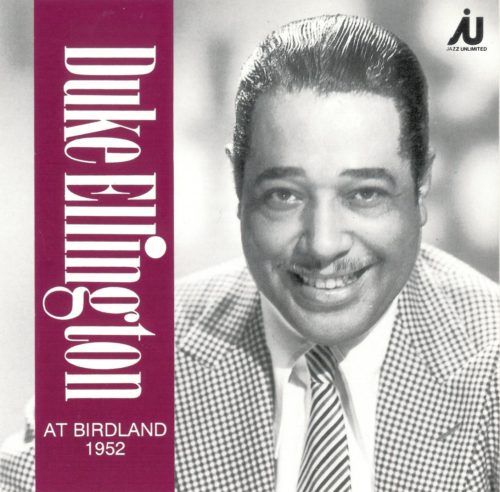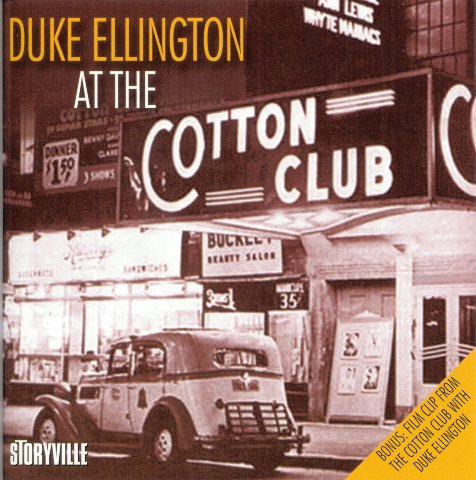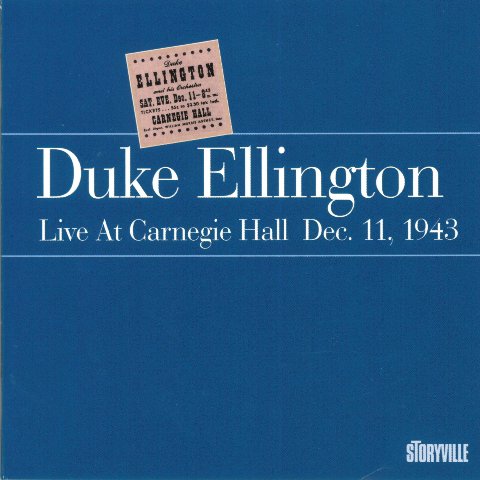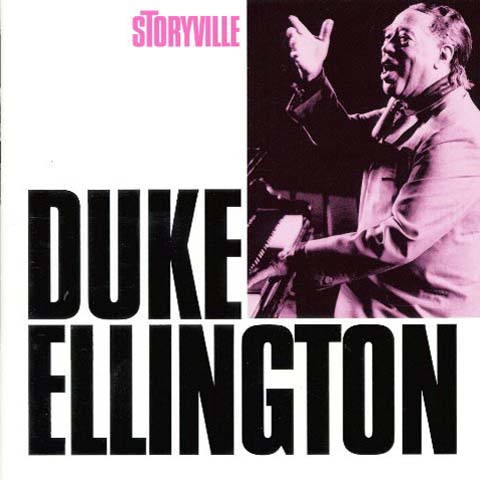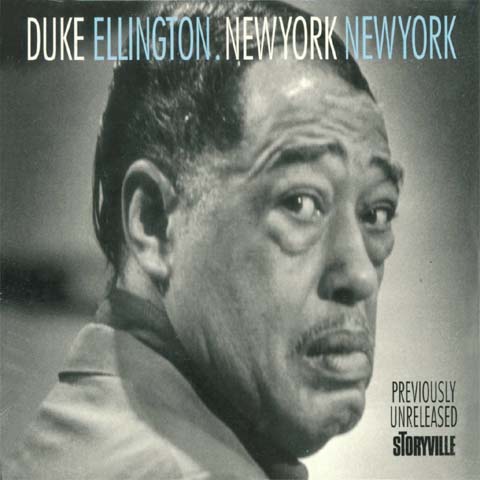Edward Kennedy “Duke” Ellington (April 29, 1899 – May 24, 1974) was an American composer, pianist, and big-band leader. Ellington wrote over 1,000 compositions. In the opinion of Bob Blumenthal of The Boston Globe, “[i]n the century since his birth, there has been no greater composer, American or otherwise, than Edward Kennedy Ellington.” A major figure in the history of jazz, Ellington’s music stretched into various other genres, including blues, gospel, film scores,popular, and classical. His career spanned more than 50 years and included leading his orchestra, composing an inexhaustible songbook, scoring for movies, composing stage musicals, and world tours. Several of his instrumental works were adapted into songs that became standards. Due to his inventive use of the orchestra, or big band, and thanks to his eloquence and extraordinary charisma, he is generally considered to have elevated the perception of jazz to an art form on a par with other traditional genres of music. His reputation increased after his death and the Pulitzer Prize Board bestowed on him a special posthumous honor in 1999.Ellington called his music “American Music” rather than jazz, and liked to describe those who impressed him as “beyond category.” These included many of the musicians who were members of his orchestra, some of whom are considered among the best in jazz in their own right, but it was Ellington who melded them into one of the most well-known jazz orchestral units in the history of jazz. He often composed specifically for the style and skills of these individuals, such as “Jeep’s Blues” for Johnny Hodges, “Concerto for Cootie” for Cootie Williams, which later became “Do Nothing Till You Hear from Me” with Bob Russell’s lyrics, and “The Mooche” for Tricky Sam Nanton and Bubber Miley. He also recorded songs written by his bandsmen, such as Juan Tizol’s “Caravan” and “Perdido” which brought the “Spanish Tinge” to big-band jazz. Several members of the orchestra remained there for several decades. After 1941, he frequently collaborated with composer-arranger-pianist Billy Strayhorn, whom he called his “writing and arranging companion.” Ellington recorded for many American record companies, and appeared in several films. Ellington led his band from 1923 until his death in 1974. His son Mercer Ellington, who had already been handling all administrative aspects of his father’s business for several decades, led the band until his own death in 1996. At that point, the original band dissolved. Paul Ellington, Mercer’s youngest son and executor of the Duke Ellington estate, kept the Duke Ellington Orchestra going from Mercer’s death onwards.Edward Kennedy Ellington was born on April 29, 1899 to James Edward Ellington and Daisy Kennedy Ellington. Daisy and J.E. were both pianists. Daisy primarily played parlor songs and J.E. preferred operatic airs. They lived with his maternal grandparents at 2129 Ida Place (now Ward Place), NW in the West End neighborhood of Washington, D.C. His father, James Edward Ellington, was born in Lincolnton, North Carolina on April 15, 1879 and moved to Washington, D.C. in 1886 with his parents. Daisy Kennedy was born in Washington, D.C. on January 4, 1879, and was the daughter of a former American slave. James Ellington made blueprints for the United States Navy. At the age of seven, Ellington began taking piano lessons from Marietta Clinkscales. Daisy surrounded her son with dignified women to reinforce his manners and teach him to live elegantly. Ellington’s childhood friends noticed that “his casual, offhand manner, his easy grace, and his dapper dress gave him the bearing of a young nobleman”, and began calling him Duke. Ellington credited his “chum” Edgar McEntree for the nickname. “I think he felt that in order for me to be eligible for his constant companionship, I should have a title. So he called me Duke.Though Ellington took piano lessons, he was more interested in baseball. “President Roosevelt (Teddy) would come by on his horse sometimes, and stop and watch us play,” he recalled. Ellington went to Armstrong Technical High School in Washington, D.C. He got his first job selling peanuts at Washington Senators baseball games. In the summer of 1914, while working as a soda jerk at the Poodle Dog Cafe, he wrote his first composition, “Soda Fountain Rag” (also known as the “Poodle Dog Rag”). Ellington created “Soda Fountain Rag” by ear, because he had not yet learned to read and write music. “I would play the ‘Soda Fountain Rag’ as a one-step, two-step, waltz, tango, and fox trot,” Ellington recalled. “Listeners never knew it was the same piece. I was established as having my own repertoire.” In his autobiography, Music is my Mistress (1973), Ellington said he missed more lessons than he attended, feeling at the time that playing the piano was not his talent. Ellington started sneaking into Frank Holiday’s Poolroom at the age of fourteen. Hearing the poolroom pianists play ignited Ellington’s love for the instrument and he began to take his piano studies seriously. Among the many piano players he listened to were Doc Perry, Lester Dishman, Louis Brown, Turner Layton, Gertie Wells, Clarence Bowser, Sticky Mack, Blind Johnny, Cliff Jackson, Claude Hopkins, Phil Wurd, Caroline Thornton, Luckey Roberts, Eubie Blake, Joe Rochester, and Harvey Brooks.Ellington began listening to, watching, and imitating ragtime pianists, not only in Washington, D.C., but in Philadelphia and Atlantic City, where he vacationed with his mother during the summer months. Dunbar High School music teacher Henry Lee Grant gave him private lessons in harmony. With the additional guidance of Washington pianist and band leader Oliver “Doc” Perry, Ellington learned to read sheet music, project a professional style, and improve his technique. Ellington was also inspired by his first encounters with stride pianists James P. Johnson andLuckey Roberts. Later in New York he took advice from Will Marion Cook, Fats Waller, and Sidney Bechet. Ellington started to play gigs in cafés and clubs in and around Washington, D.C. and his attachment grew to be so strong that he turned down an art scholarship to the Pratt Institutein Brooklyn in 1916. Three months before graduating he dropped out of Armstrong Manual Training School, where he was studying commercial art. From 1917 through 1919, Ellington launched his musical career, painting commercial signs by day and playing piano by night. Through his day job, Duke’s entrepreneurial side came out: when a customer would ask him to make a sign for a dance or party, he would ask them if they had musical entertainment; if not, Ellington would ask if he could play for them. He also had a messenger job with the U.S. Navy and State Departments. Ellington moved out of his parents’ home and bought his own as he became a successful pianist. At first, he played in other ensembles, and in late 1917 formed his first group, “The Duke’s Serenaders” (“Colored Syncopators”, his telephone directory advertising proclaimed). He was not only a member, but also the booking agent. His first play date was at the True Reformer’s Hall, where he took home 75 cents.Ellington played throughout the Washington, D.C. area and into Virginia for private society balls and embassy parties. The band included Otto Hardwick, who switched from bass to saxophone; Arthur Whetsol on trumpet; Elmer Snowden on banjo; and Sonny Greer on drums. The band thrived, performing for both African-American and white audiences, a rarity during the racially divided times.When his drummer Sonny Greer was invited to join the Wilber Sweatman Orchestra in New York City, Ellington made the fateful decision to leave behind his successful career in Washington, D.C., and move to Harlem, becoming one of the figures of the Harlem Renaissance. New dance crazes like the Charleston emerged in Harlem, as well as African-American musical theater, including Eubie Blake’s Shuffle Along. After the young musicians left the Sweatman Orchestra to strike out on their own, they found an emerging jazz scene that was highly competitive and hard to crack. They hustled pool by day and played whatever gigs they could find. The young band met Willie “The Lion” Smith who introduced them to the scene and gave them some money. They played at rent-house parties for income. After a few months, the young musicians returned to Washington, D.C., feeling discouraged. In June 1923, a gig in Atlantic City, New Jersey, led to a play date at the prestigious Exclusive Club in Harlem. This was followed in September 1923 by a move to the Hollywood Club – 49th and Broadway – and a four-year engagement, which gave Ellington a solid artistic base. He was known to play the bugle at the end of each performance. The group was called Elmer Snowden and his Black Sox Orchestra and had seven members, including James “Bubber” Miley. They renamed themselves “The Washingtonians”. Snowden left the group in early 1924 and Ellington took over as bandleader. After a fire, the club was re-opened as the Club Kentucky (often referred to as the “Kentucky Club”), an engagement which set the stage for the biggest opportunities in Ellington’s life. Ellington made eight records in 1924, receiving composing credit on three including Choo Choo. In 1925, Ellington contributed four songs to Chocolate Kiddies, an all-African-American revue which introduced European audiences to African-American styles and performers. “Duke Ellington and his Kentucky Club Orchestra” grew to a ten-piece organization; they developed their own sound by displaying the non-traditional expression of Ellington’s arrangements, the street rhythms of Harlem, and the exotic-sounding trombone growls and wah-wahs, high-squealing trumpets, and sultry saxophone blues licks of the band members. For a short time soprano saxophonist Sidney Bechet played with the group, imparting his propulsive swing and superior musicianship to the young band members. In 1927, King Oliver turned down a regular booking for his group as the house band at Harlem’s Cotton Club; the offer passed to Ellington. With a weekly radio broadcast, famous white clientele nightly poured in to see them. Ellington was joined in New York City by his wife, Edna Thompson, and son Mercer in the late twenties, but the couple soon permanently separated.[20] According to her obituary in Jet magazine, she was “[h]omesick for Washington” and returned (she died in 1967).Although trumpeter Bubber Miley was a member of the orchestra for only a short period, he had a major influence on Ellington’s sound. An early exponent of growl trumpet, his style changed the “sweet” dance band sound of the group to one that was hotter, which contemporaries termed “jungle” style. He also composed most of “Black and Tan Fantasy” and “Creole Love Call”. An alcoholic, Miley had to leave the band before they gained wider fame. He died in 1932 at the age of 29. He was an important influence on Cootie Williams, who replaced him. In 1927, Ellington made a career-advancing agreement with agent-publisher Irving Mills, giving Mills a 45% interest in Ellington’s future. Mills had an eye for new talent and early on published compositions by Hoagy Carmichael, Dorothy Fields, and Harold Arlen. During the 1930s, Ellington’s popularity continued to increase – largely as a result of the promotional skills of Mills – who got more than his fair share of co-composer credits. From the beginning of their relationship, Mills arranged recording sessions on nearly every label including Brunswick, Victor, Columbia, OKeh, Perfect, Pathe, the ARC/Plaza group of labels (Cameo, Romeo, Lincoln, Oriole, Domino, Jewel, Banner), Hit of the Week, and Columbia’s cheaper labels (Harmony, Diva, Velvet Tone, Clarion) labels which gave Ellington popular recognition, as well giving Ellington’s fans the opportunity of hearing multiple versions of the same song. Ellington ended his association with Mills in 1937, although he continued to record under Mills’ banner through to 1940. At the Cotton Club, Ellington’s group performed all the music for the revues, which mixed comedy, dance numbers, vaudeville, burlesque, music, and illegal alcohol. The musical numbers were composed by Jimmy McHugh and the lyrics by Dorothy Fields (later Harold Arlen and Ted Koehler), with some Ellington originals mixed in. Weekly radio broadcasts from the club gave Ellington national exposure. In 1929, Ellington appeared in his first movie, a nineteen-minute all-African-American RKO short, Black and Tan, in which he played the hero “Duke”. In the same year, the Cotton Club Orchestra appeared on stage for several months in Florenz Ziegfeld’s Show Girl, along with vaudeville stars Jimmy Durante, Eddie Foy, Jr., Al Jolson, Ruby Keeler, and with music and lyrics by George Gershwin and Gus Kahn. That feverish period also included numerous recordings, under the pseudonyms “Whoopee Makers”, “The Jungle Band”, “Harlem Footwarmers”, and the “Ten Black Berries”. In 1930, Ellington and his Orchestra connected with a whole different audience in a concert with Maurice Chevalier and they also performed at the Roseland Ballroom, “America’s foremost ballroom”. Noted composer Percy Grainger was also an early admirer and supporter. He wrote “The three greatest composers who ever lived are Bach, Delius and Duke Ellington. Unfortunately Bach is dead, Delius is very ill but we are happy to have with us today The Duke”.In 1929, when Ellington conducted the orchestra for Show Girl, he met Will Vodery, Ziegfeld’s musical supervisor. In his 1946 biography, Duke Ellington, Barry Ulanov wrote: From Vodery, as he (Ellington) says himself, he drew his chromatic convictions, his uses of the tones ordinarily extraneous to the diatonic scale, with the consequent alteration of the harmonic character of his music, its broadening, The deepening of his resources. It has become customary to ascribe the classical influences upon Duke – Delius, Debussy and Ravel – to direct contact with their music. Actually his serious appreciation of those and other modern composers, came after his meeting with Vodery. As the Depression worsened, the recording industry was in crisis, dropping over 90% of its artists by 1933. Ellington and his orchestra survived the hard times by taking to the road in a series of tours. Radio exposure also helped maintain popularity. Ivie Anderson was hired as their featured vocalist. Sonny Greer had been providing occasional vocals and continued to do in a cross-talk feature with Anderson. Ellington, however, later had many different vocalists, including Herb Jeffries (until 1943) and Al Hibbler (who replaced Jeffries in 1943 and continued until 1951). Ellington led the orchestra by conducting from the keyboard using piano cues and visual gestures; very rarely did he conduct using a baton. As a bandleader, Ellington was not a strict disciplinarian; he maintained control of his orchestra with a crafty combination of charm, humor, flattery, and astute psychology. A complex, private person, he revealed his feelings to only his closest intimates and effectively used his public persona to deflect attention away from himself. While the band’s United States audience remained mainly African-American in this period, the Cotton Club had a near-exclusive white clientele and the Ellington orchestra had a huge following overseas, exemplified by the success of their trip to England in 1933 and their 1934 visit to the European mainland. The English visit saw Ellington win praise from members of the “serious” music community, including composer Constant Lambert, which gave a boost to Ellington’s aspiration to compose longer works. For agent Mills it was a publicity triumph, as Ellington was now internationally known. On the band’s tour through the segregated South in 1934, they avoided some of the traveling difficulties of African-Americans by touring in private railcars. These provided easy accommodations, dining, and storage for equipment while avoiding the indignities of segregated facilities.







